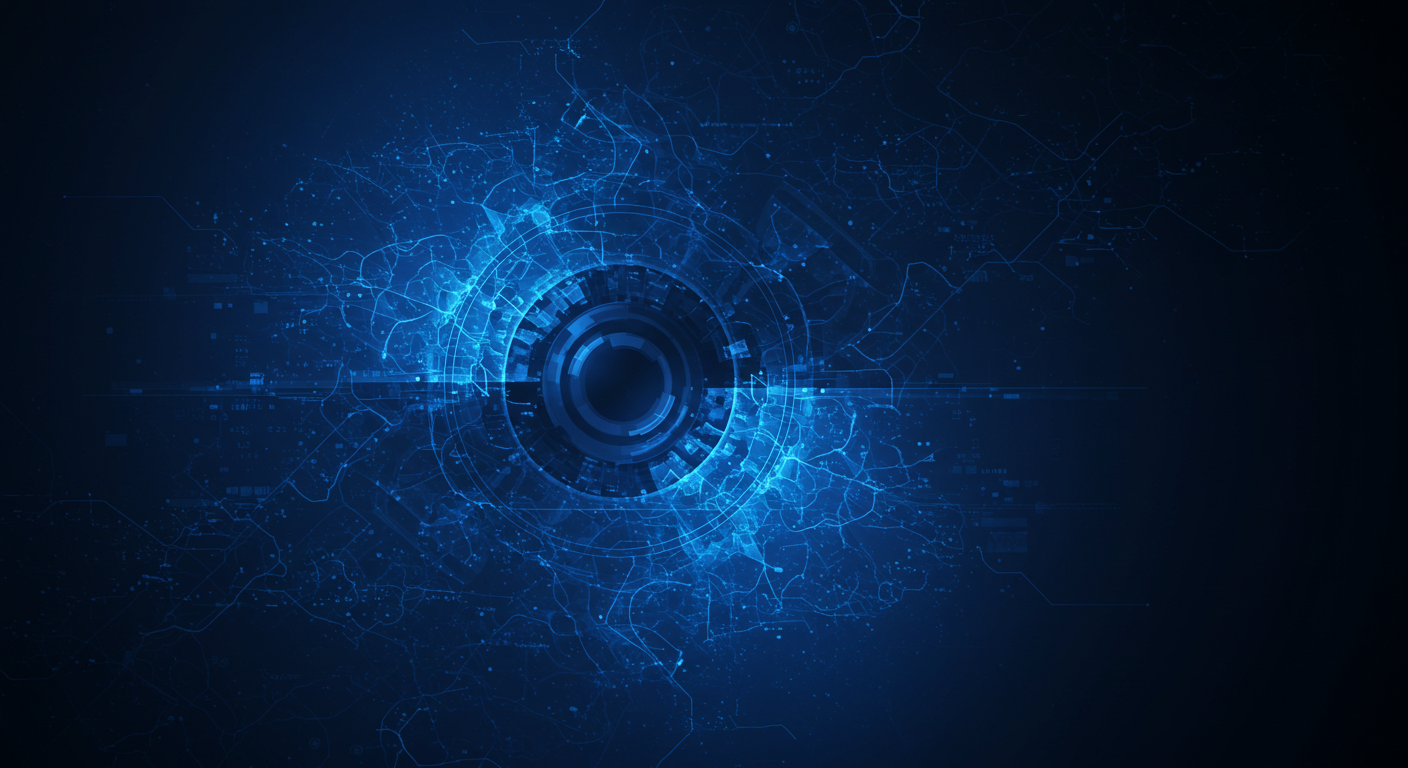Introduction: AI Revolution in the Manufacturing Industry, Entering the Practical Phase
In July 2025, artificial intelligence (AI) technology is clearly shifting from the “experimental phase” to the “practical phase. Especially in the manufacturing industry, applications that create substantial value rather than mere buzzwords are emerging one after another, accelerating the movement toward the realization of smart factories. This paper describes the latest technological trends and practical examples that can be applied in the manufacturing industry, based on global AI-related news from July 20 to 26, 2025.
Of particular note are advances in agentic AI, digital twin technologies, manufacturing-specific large-scale language models, collaborative robotics, and advanced predictive maintenance and quality control. These technologies are evolving in direct response to the manufacturing industry’s most pressing challenges, such as eliminating talent shortages on the manufacturing floor, improving quality, optimizing costs, and strengthening supply chains.
1. current status and challenges of AI adoption in the manufacturing industry: the reality in Japan
According to a survey released in July 2025 by Caddy Corporation, the biggest challenge facing Japan’s manufacturing industry is the “shortage of human resources and skill transfer issues” (46.9%), followed by “soaring raw material and energy costs” (28.2%) and “aging production facilities and insufficient investment” (19.8%). Although interest in the use of AI to address these issues is growing, actual implementation has not kept pace with expectations.
AI Introduction Status: Japan Lagging Behind
According to the survey, only about 10% of all companies responded that they are “already using AI in a production environment,” while the total of “not considering at all” (16.0%) and “considering but undecided” (19.4%) together accounted for 35.4% of all companies. A KeyWalker survey released around the same time also found that 10.6% of companies “have implemented and are operating AI company-wide” and 26.3% “have implemented AI in some business areas,” for a total of only 36.9% of the total.
The biggest barrier to AI adoption is “Lack of AI personnel and skills” (27.3%), which is nearly double the number of “Lack of data collection and maintenance for AI” (13.9%), which comes in second. (35.6%), “No one to teach” (35.4%), and “No time and cost for training” (29.6%).
In response to these issues, the most important points for manufacturers when introducing AI tools were “support system after introduction and operation,” “ease of operation and UI,” and “appropriateness of introduction and operation costs” (38.4% each), while “low training costs” (27.5%) and “compatibility with the industry and industry-specificity” (27.2%) were also important. Low cost of training” (27.5%) and “affinity with the industry and industry-specificity” (27.2%) were also important.
“AI application in the manufacturing industry requires onsite understanding, which makes AI human resource development more difficult. Forty percent of companies emphasize combining their own experience and data with AI, and the key to AI utilization is the ability to utilize “their own knowledge”.
2. promising areas of AI application: evolution of predictive maintenance and quality control
In the manufacturing industry, the areas where AI utilization is most advanced or being considered are “production planning and demand forecasting” (55.2%), “quality inspection and abnormality detection” (48.1%), and “equipment maintenance and utilization rate optimization” (41.0%). How are these areas actually being utilized?
2-1. Evolution of Visual Quality Control with AI
According to a Siemens article (July 2025), AI-powered image processing systems are revolutionizing quality inspection in manufacturing. For example, a solution called Inspekto, which can be used in less than an hour without AI or image processing expertise, provides accurate results with only about 20 sample images classified as “good.”
MTConnectivity Power2pcb, a mid-sized company, uses this Inspekto to inspect connectors and identify minute deviations and slightly bent contacts. By integrating this AI-based system into their production line, they are able to provide continuous quality assurance, improve reliability, and shorten delivery times.
2-2. Practical Application of Predictive Maintenance
AI is also innovating predictive maintenance. Instead of relying on fixed maintenance intervals and manual analysis, AI uses continuous monitoring of machine data to detect early signs of wear and recommend maintenance actions. and recommendations.
For example, pulp and wood products manufacturer Mercer Celgar uses this technology to monitor its machinery in real time. Data from multiple production lines is integrated into a central platform that provides a complete picture of the manufacturing process and significantly reduces downtime.
2-3. Manufacturing-specific AI: The Emergence of MaVila
Developed by the Autonomy Research Center for STEAHM at California State University, Northridge, with support from the National Science Foundation (NSF), MaVila (Manufacturing, Vision and Language) combines image analysis and natural language processing to MaVila (Manufacturing, Vision and Language) is an intelligent assistant that combines image analysis and natural language processing to help manufacturers detect problems, suggest improvements, and communicate with machines in real time.
MaVila is unique in that it is trained from the start with manufacturing-specific knowledge, rather than relying on external data such as information from the Internet. It learns directly from visual and language-based data from the factory setup, can “see” and “speak” the part, analyze defects, suggest corrections, and even communicate with the machine to make automatic adjustments.
MaVila is trained with much less data than typical AI systems, a significant advantage in the manufacturing industry where data is limited or collection costs are high. This makes the solution accessible to smaller companies that may not have access to expensive AI tools or the necessary expertise.
3. digital twin and cobot: next generation technologies in manufacturing
3-1. AI Powered’s Digital Twin Evolves
According to SP Global’s Automotive Industry Report (July 2025), AI enables rapid testing of scenarios across plants and vehicle systems; adding a digital twin to the R&D pipeline enables early-stage validation and data layered feedback loop reduces downtime and development costs.
The digital twin provides a virtual replica of physical assets and processes, providing a valuable “sandbox” in which companies can simulate and test new systems and workflows in a virtual environment before implementing them. This capability is especially important for fine-tuning interactions and processes to optimize human-robot collaboration to ensure seamless integration and maximum output.
3-2. A new relationship between collaborative robots (cobots) and humans
According to the International Federation of Robotics (IFR), there will be 4.2 million industrial robots in operation worldwide in 2023, with cobots accounting for a substantial share of that number. In addition, the global collaborative robot (cobot) sales market is projected to reach $2.199 billion in 2031 from $1.02 billion in 2024, growing at a compound annual growth rate of 11.8% during the forecast period 2025-2031.
One of the most important benefits of cobots is that they free human workers from repetitive, hazardous, or physically demanding tasks. This allows the human workforce to focus on higher-value activities that require unique human attributes that machines cannot replicate, such as critical thinking, problem solving, and creativity.
For example, at Amazon.com facilities, the number of robots is nearly approaching the number of human workers, indicating a strategic shift where automation handles the heavy lifting while human ingenuity focuses on more complex tasks. This integrated approach not only leads to marked gains in productivity, flexibility, and safety, but also fosters a truly synergistic relationship between cutting-edge technology and a skilled and adaptable human workforce.
4. agent-based AI: next-generation intelligence for manufacturing
According to the July 2025 Pharmaceutical Manufacturing Industry Report, agent-based AI is the next generation of AI approaches, combining data insights with autonomous or semi-autonomous execution. Agent-based AI uses a suite of specialized agents that interpret data, make decisions, and act automatically without waiting for human intervention.
These AI agents understand goals, interpret context, and perform specific tasks across complex digital systems. The ability to analyze, decide, and act in real time makes agent-based AI particularly well suited to solve the most pressing operational challenges in labs and manufacturing.
Main applications of agent-based AI in the manufacturing industry
- Lab operations: data monitoring to predict equipment failures, automatic intervention scheduling, reduce downtime and costs
- Intelligent scheduling: dynamically assign tasks to optimize throughput and reduce idle time
- Resource optimization: Ensure efficient use of equipment and personnel to increase laboratory productivity
- New Product Introduction (NPI): Analyze development data to streamline transfers and ensure faster, more consistent product releases
- Supply chain resilience: continuously monitor logistics, inventory, and schedules to adjust orders, reroute deliveries, and update production plans when shortages or delays are detected
Gregory Tink of Schneider Electric says AI agents are playing a key role in making the company’s supply chain more resilient. “As an industry, we need to be able to take what’s in the operator’s head and their 20 years of experience and incorporate that experience into our algorithms. The agents we create in this way become experts and help guide the supply chain, the factory floor, and the decisions that are being made.”
5. supply chain AI: from “just in time” to “just in case
As global supply chains continue to be disrupted, manufacturers are using AI to build resilient supply chains. On July 17, Walmart, the largest U.S. retailer, announced that it will restructure its global supply chain using artificial intelligence (AI) and automation technologies that it has demonstrated in the United States.
5-1. The emergence of “self-healing inventory management.”
Wal-Mart Mexico City has implemented a system called Self-Healing Inventory to make better use of display shelves. The system detects imbalances in inventory levels and automatically reallocates products to where they are needed most before problems surface in the store.
At the Costa Rican distribution center, fresh produce such as pineapples, greens, and root vegetables are shipped before dawn, and predictive warehouse management and transportation management systems plan optimal delivery routes and adjust orders to meet store demand before employees arrive early in the morning. This ensures that the freshest food is on store shelves as quickly as possible and reduces the manual labor burden on employees.
5-2. Resilience-oriented supply chain strategy
According to Gregory Tink of Schneider Electric, prior to COVID-19, the company viewed its supply chain as stable. We took that availability for granted,” Tink said. But when pandemics and other disruptions hit, Schneider Electric had to shift its strategy to focus on resilience, rather than prioritizing where it could make the most product economically.
Tink added, “It’s really been driven by the fact that if we can’t get parts in a timely manner to make a product, it affects the product we make, which affects our customers.” Against this backdrop, predictive analytics is becoming increasingly important, backed by real-time data from IoT devices that can predict disruptions, such as when equipment needs repair.
It’s not just ‘just-in-time’ manufacturing. Rather, it is ‘just-in-case’ thinking, in case something happens. How can we be more resilient, more sustainable, more effective?” (Gregory Tink, Schneider Electric)
AI Market Trends and Policy Environment
The AI market in manufacturing is growing rapidly; according to a report by MarketsandMarkets, the AI market in manufacturing in the U.S. is projected to reach $6.08 billion by 2028 from $920 million in 2023, growing at a 46.0% It is expected to grow at a CAGR of 46.0% between 2023 and 2028.
This growth is fueled by the rapid adoption of industrial robots in manufacturing plants, which generate large amounts of data used to train machine learning algorithms and enhance the robots’ capabilities. In addition, the U.S. is leading in the adoption of the Industrial Internet of Things (IIoT), which, along with computer vision and context-aware computing technologies, is driving smarter and more efficient manufacturing processes.
6-1. Global AI Policy Environment: Trends in the U.S.
On July 23, 2025, the U.S. Trump Administration announced its AI Action Plan to enhance competitiveness in the field of artificial intelligence (AI). The plan aims to accelerate domestic AI development, modernize critical infrastructure, foster innovation, promote economic growth, and counter geopolitical threats through a combination of export controls, diplomatic engagement, and national security measures, particularly from China.
Of particular importance to the manufacturing sector is a policy to enhance AI research and innovation through increased investment in AI research, removal of regulatory barriers, and promotion of open source and open weight models. It also includes plans to implement pilot programs, public-private partnerships, and federal incentives to accelerate AI adoption across sectors.
6-2. AI Deployment in Asia: WAIC 2025
Meanwhile, in China, the 8th World Artificial Intelligence Conference (WAIC 2025) was held in Shanghai from July 26 to 28, 2025. The theme of the conference was “Global Solidarity in the AI Era,” and more than 800 domestic and international exhibitors took part in the event, with more than 3,000 exhibits.
In particular, the Industrial Applications Hall focused on AI-enabled integration in key areas such as intelligent driving, smart cities, fintech, and new industrialization. The “WAIC City Walk” smart experience loop also demonstrated the applicability of new technologies such as drone commuting and low-altitude economy to a variety of scenarios, including daily services, urban transportation, and industrial ecosystems.
Shanghai, a major center of China’s AI industry, reportedly has an AI industry size of over RMB 118 billion in the first quarter of 2025 and a talent pool that accounts for one-third of the nation’s total. These large-scale exhibitions provide an important opportunity to keep abreast of global trends in manufacturing technology.
Conclusion: Roadmap for AI adoption in the manufacturing industry
AI technology in the manufacturing industry is clearly moving from the experimental phase to the practical phase in 2025. Although interest in AI is growing in Japan’s manufacturing industry to address human resource shortages and skill transfer issues, the actual adoption rate remains low, and the AI human resource shortage is the biggest barrier.
Meanwhile, globally, technologies such as predictive maintenance, visual quality control, digital twin, and collaborative robotics are rapidly evolving and being implemented in manufacturing. Of particular note is the rise of agent-based AI and the shift to “just-in-case” thinking to strengthen supply chain resilience.
The following are key points for manufacturers to consider as they move forward with AI implementation:
Action Plan for the Introduction of AI in the Manufacturing Industry
- Organize and capitalize your company’s data: To maximize the effectiveness of AI, it is essential to convert your company’s experience and know-how into data and develop a foundation for AI learning.
- A phased implementation approach: It is important to start with areas where ROI is easy to see, such as quality inspection and demand forecasting, and build on successful experiences.
- Leverage human resource development and external support: In parallel with bringing AI personnel in-house, consider leveraging external training programs and support services to lower the barriers to adoption.
- Emphasis on usability and support system: When selecting an AI tool, emphasis should be placed not only on its technological advancedness, but also on its ease of use and post-implementation support system.
- Leverage manufacturing -specific AI: Manufacturing-specific AI tools, such as MaVila, may be more effective with less data than general-purpose AI.
The use of AI in the manufacturing industry is becoming more than just a tool for improving operational efficiency; it is becoming a strategic asset for establishing competitive advantage. This is expected to continue in the second half of 2025 and beyond.
Each company can maximize the benefits of AI by clarifying its own issues, selecting the appropriate technology, and implementing it in stages.
[Source list].
1. SP Global (July 2025). AI in the Automotive Industry: Trends, Benefits, and Use Cases,” https://www.spglobal.com/automotive-insights/en/blogs/2025/07/ai-in-automotive-industry
2. Industry Today (July 22, 2025). AI, Digital Twins, and Cobots Drive Industry Transformation,” https://industrytoday.com/ai-digital-twins-cobots-drive-industrial-change/
3. National Science Foundation (July 2025). How a New AI Model Could Revolutionize U.S. Manufacturing,” https://www.nsf.gov/news/new-ai-model-could-revolutionize-us-manufacturing
4. caddy corporation (July 2025). Manufacturing x AI Issues and Prospects Survey 2025,” https://prtimes.jp/main/html/rd/p/000000151.000039886.html
5. pymnts.com (July 22, 2025). “Inside Schneider Electric’s AI-Powered Supply Chain,” https://www.pymnts.com/artificial-intelligence-2/2025/from-just-in-time-to-just-in-case-inside-schneider-electrics-ai-powered-supply-chain/
6. automation.com (July 2, 2025). How Artificial Intelligence is Transforming Manufacturing,” https://www.automation.com/en-us/articles/july-2025/how-ai-transforming-manufacturing
7. 47NEWS (July 24, 2025). WAIC 2025 to be held in Shanghai, showcasing China’s technology leadership”,. https://www.47news.jp/12915025.html
8. itmedia monoist (July 25, 2025). The challenges of AI human resource development in the manufacturing industry are “compatibility with business operations” and “education costs”. https://monoist.itmedia.co.jp/mn/articles/2507/25/news031.html
JETRO Business Brief (July 2025). Wal-Mart Restructures Global Supply Chain with AI and Automation Technology. https://www.jetro.go.jp/biznews/2025/07/c489e63208beafc6.html
10. Pharmaceutical Manufacturer (July 15, 2025). The Role of Agent-based AI in Life Science Manufacturing,” https://pharmaceuticalmanufacturer.media/pharmaceutical-industry-insights/digital-health-in-pharma/agentic-ais-role-in-life-science-manufacturing/
11. globe newswire (july 9, 2025). AI-Powered Manufacturing in the U.S. to be a $6.08 Billion Market by 2028,” https://www.globenewswire.com/news-release/2025/07/09/3112548/0/en/AI-Powered-Manufacturing-in-the-U-S-Set-for-6-08-Billion-Market-by-2028.html
12. Data Protection Report (July 2025). The White House Releases AI Action Plan in Artificial Intelligence,” https://www.dataprotectionreport.com/2025/07/white-house-unveils-ai-action-plan-in-artificial-intelligence/


